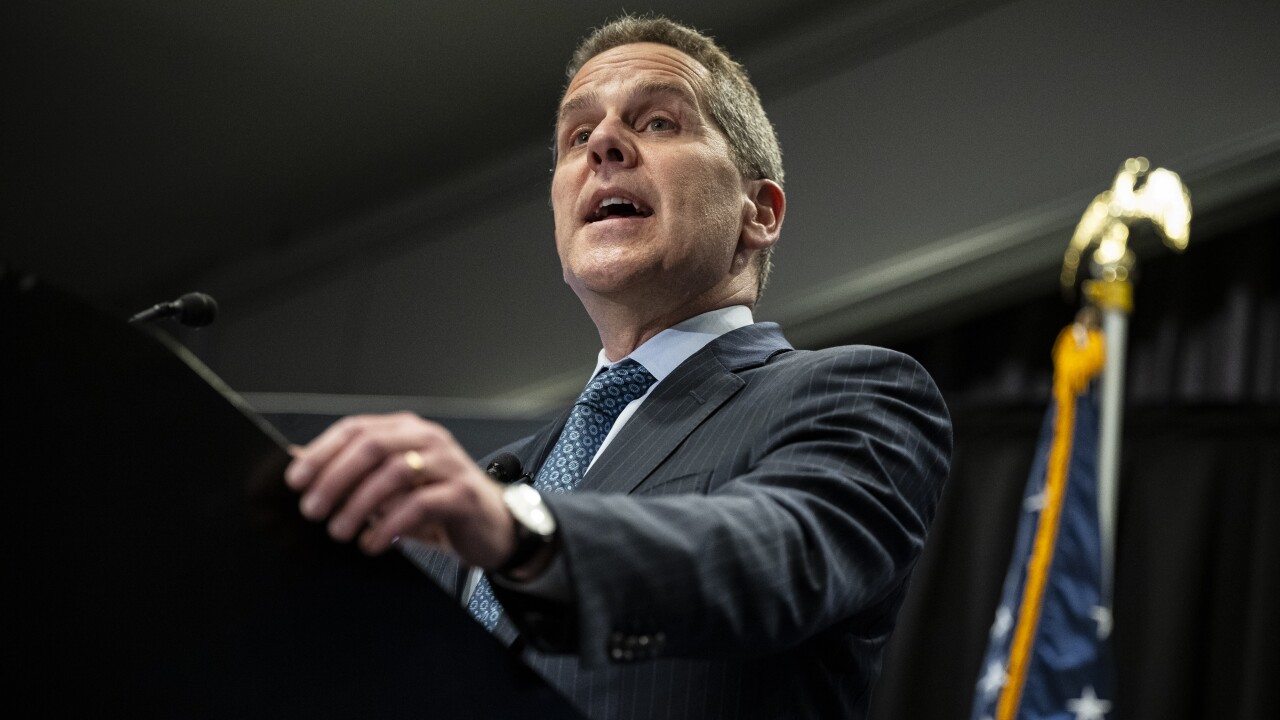After a year of pandemic-induced caution in consumer lending, bankers are starting to reacquaint themselves with risk.
Lending standards have not yet recovered from the massive tightening in 2020, and banks remain somewhat hesitant about lending to consumers with lower credit scores. But a recent Federal Reserve survey suggests some normalization in underwriting as vaccinations and fiscal stimulus help fuel an economic rebound.
Many U.S. consumers have emerged from the pandemic’s darkest days in better financial shape than they were before.
“Consumers are flush with cash, and they’ve been paying down debt,” said Piper Sandler analyst Scott Siefers. “That confluence of factors has made banks much more tolerant of taking on risk again.”

Standards for credit card and auto loans generally remained more stringent than they were before the pandemic, according to the Federal Reserve’s April survey of senior bank loan officers. But those standards did loosen in the first quarter, the survey found, continuing a thaw that began late last year.
Some banks reduced the minimum credit score required for credit cards and auto loans, and some bumped up borrowing limits on card accounts, according to the survey.
In one sign of a return to greater normalcy, 14 banks told the Fed that they had eased their standards for credit card applications, while only one had tightened its criteria. Most banks responded that they kept their standards basically unchanged.
A similar trend played out with auto loan applications. Only one bank tightened its standards for approving new borrowers, a sharp reversal from the extreme stringency of the pandemic’s early days.
“It’s a normal migration,” said John Hecht, a Jefferies analyst. “There doesn't seem anything out of whack or anything unusual about the fact that lenders are loosening now based upon what's going on in the world.”
The trends found by the Fed are not surprising and should continue as long as the economic recovery stays on track, agreed Megan Fox, an analyst at Moody’s Investors Service.
Banks built up hefty reserve cushions early in the pandemic in case they suffered losses on loans. But massive amounts of fiscal support have helped ensure their consumer loan books continue to perform, she said.
Bank of America prepared for consumer loan losses that it “never came close” to realizing, CEO Brian Moynihan told analysts on the bank’s most recent earnings call. He noted that the Charlotte, N.C.-based bank has been releasing reserves amid lower delinquencies and higher consumer savings.
BofA is now back to pre-pandemic underwriting criteria for consumer loans, said Chief Financial Officer Paul Donofrio.
U.S. Bancorp is also “seeing a lot of nice green shoots,” CFO Terrance Dolan told investors last month. As consumer spending continues to recover, loans to consumers “will come back as well,” Dolan said.
So far, however, demand for loans has remained sluggish. Siefers expressed concern about the lack of loan growth.
In commercial lending, banks appear to be increasingly fighting “tooth and nail” for the relatively few businesses seeking loans, Siefers said. The aggressive competition naturally poses risks of lower and more “cutthroat” pricing, as well as banks' making loans that are overly risky, he noted.
Banks have remained disciplined in their consumer underwriting, and a continued return to normalcy should lead to somewhat looser underwriting going forward, said Moody’s senior vice president Warren Kornfeld. One key question is whether banks will become “overly comfortable” and push the loosening “too far,” he added.





